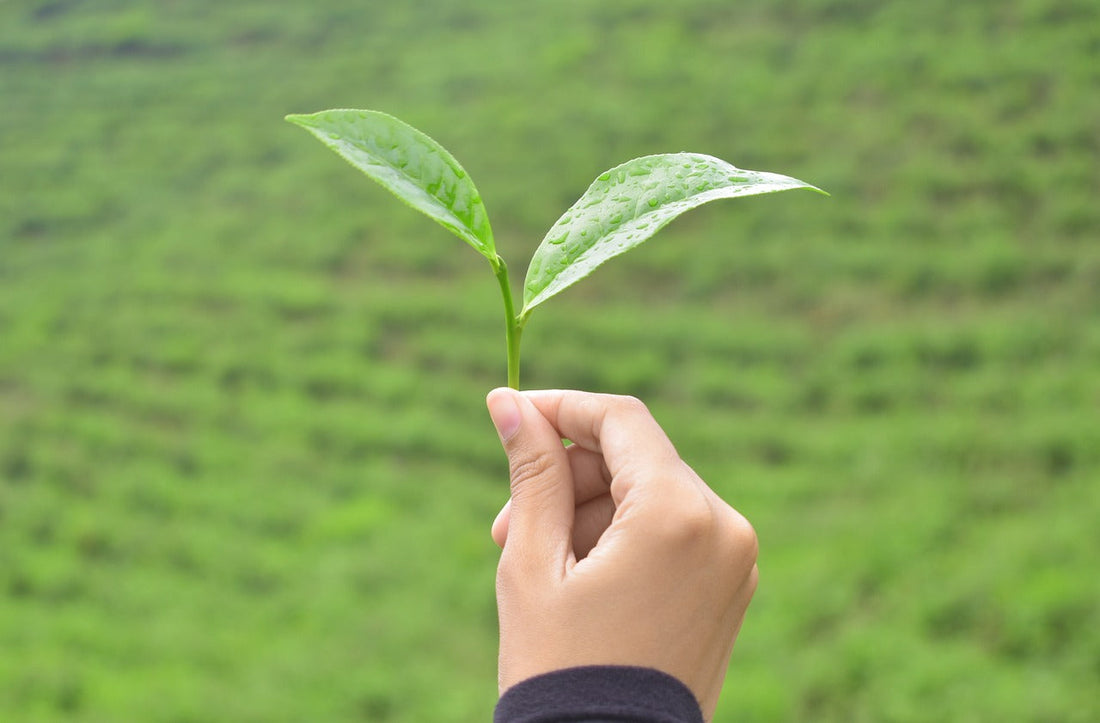
Tea Stories
Share
JESSE: Hey Angel! What tea story do you want to share with us today?
ANGEL (JTH Customer Relations Manager): I thought since I'm a big history nerd, I thought I'd start with a basic overview of the WHOLE HISTORY of Tea! I tried very hard to keep it short though ;P
JESSE: Great, thanks so much!! Enjoy, everyone!
Have you ever wondered how tea came to be? It was a happy discovery that steeped its way into our hearts over many years, becoming the refreshing beverage we enjoy today.
Here’s a super brief rundown of how your favorite teas made its way from the beginnings of history to your gaiwan.
Early History and Shennong’s Legacy in Herbalism

(Painting of The Divine Farmer by Artist Guo Xu in 1503 courtesy of Shanghai Museum)
According to legend, around 2737 BC Shennong was boiling water under a tea tree when some leaves fell into his pot. Being the curious and experimental man he was, he tried the mixture and found the resulting drink to be refreshing and restorative! The emperor then introduced tea as a medicine to the people, and it quickly became popular among the Chinese aristocracy and Buddhist monks for its health-giving properties.
Tang and Song Dynasties (7th-13th Centuries)
During this period, tea culture began to blossom. Tea evolved from a bitter medicinal drink to a symbol of elegance, synonymous with refinement and grace. Tea houses sprang up, offering people places to socialize and enjoy tea and poetry. Inspired by Zen Buddhism, tea ceremonies began emphasizing mindfulness and appreciation of tea; focusing on the flavor, the aroma, and the preparation of it.

("An Elegant Party" by Emperor Huizong of the Song Dynasty. Courtesy of The National Palace Museum in Taipei)
Scholars and poets of the time incorporated tea related themes into their writings, which helped to cement its cultural importance. Lu Yu, wrote “the Classics of Tea,” a foundational text in Chinese tea culture during this time. Lu Yu's comprehensive education in literature and philosophy shaped his insights into tea cultivation, preparation, and the virtues of tea. His work highlighted tea's medicinal benefits and its role in fostering harmony and tranquility. We recommend looking up his story, if you haven’t already!
It was also during this time that the Tea Trade became prevalent on the Silk road and through maritime trade routes. By the Tang Dynasty, tea was reaching Japan, Korea, and Central Asia while spreading to the Middle East and Europe via the Silk Road during the Song Dynasty. While loose leaf tea was slowly becoming more popular, compressed forms of tea (like our Master Series Tea Cakes!) were the standard for their ease of transport and storage along trade routes.
Yuan, Ming and Qing Dynasties (14th-20th Centuries)

(Chinese Drama "Yanxi Palace" depicting Qing Emperor Qianlong with 2 Gaiwans)
During this time tea production was further refined, and new varieties like green tea emerged. Longjing Green Tea was said to be invented by Emperor Qianlong; both handsome AND multi-talented. (Feel free to try out our Longjing Green tea here btw.) The export of tea to the West and beyond became significant starting in the 16th century around the time when the Qing Dynasty was busy overtaking the Ming. We also see our first official teapots around this time! They were developed to accommodate loose leaf teas and provide a more precise and enjoyable tea-drinking experience.
Modern Day

(Rows of Tea Bushes in Southwestern China)
In the 20th century, tea production in China was modernizing. With new methods and mechanization, quality tea was becoming more accessible than ever. Chinese tea culture has influenced tea-drinking customs worldwide both in the past and now in the present. Thanks in part to the internet, many Chinese teas are gaining new popularity for their flavors and health benefits. Recently there’s been a resurgence of interest in traditional and artisanal teas, focusing on craftsmanship and cultural significance.
Of course there’s a ton of information behind each of these points, but I hope you enjoyed this brief overview of the history of Tea! If you have anything you’d like us to cover please feel free to email us your thoughts at teafriendsupport@jessesteahouse.com! We always love to hear from you :)
Happy sipping!
-Angel <3
